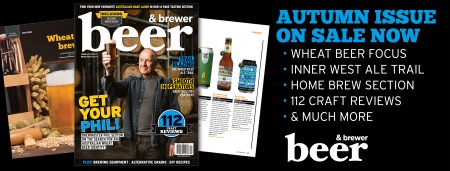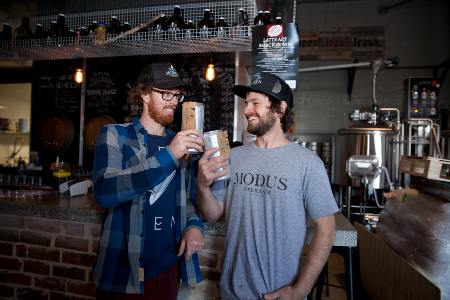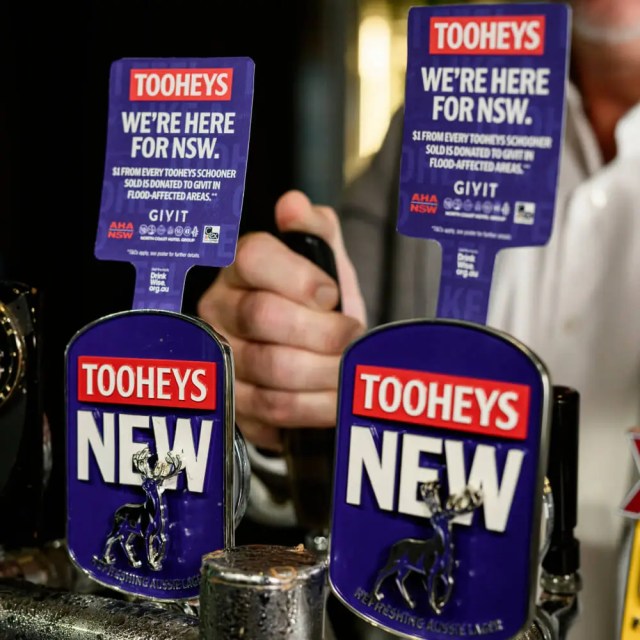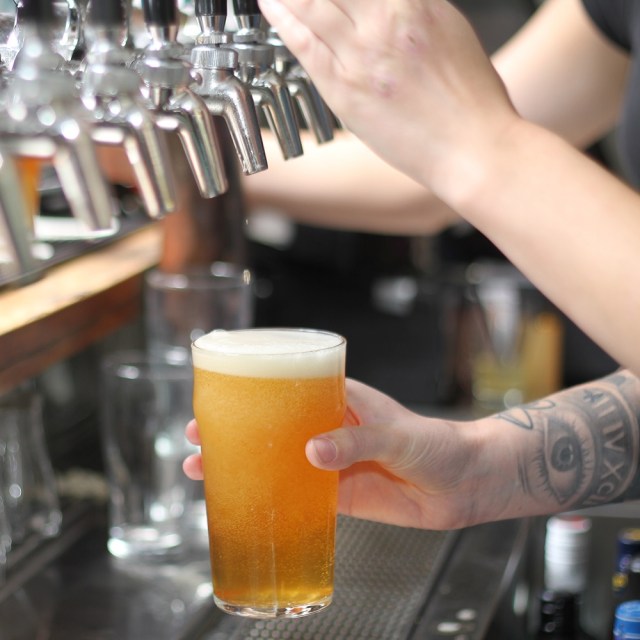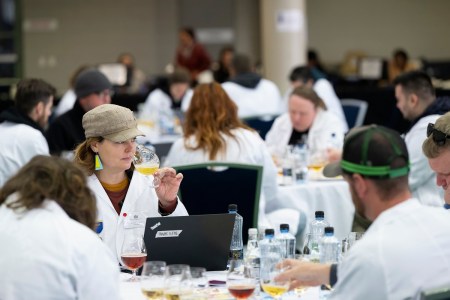
In her continuing series of Senses Working Overtime articles, sensory analyst Briony Liebich from Flavour Logic (pictured above) nose dives into our sense of smell and how it’s vital to optimising a beer tasting experience.
We perceive the world through our eyes, ears, skin, nose and mouth. These sensory organs continuously feed information via our nerve cells into our brain, we then act based on our interpretation. Sensory communication can be physical (touch, sound, temperature), or chemically detected from smell or taste.
There is far less investigation on smell compared with vision and hearing, as smell was widely believed to be an inferior and underdeveloped sense. This false belief traces back to 19th Century neuroscientists who noted that the human olfactory bulb is smaller than other mammals like dogs that rely heavily on smell, making our sniffing skills far less acute. Although this is the case, our human brains make the most of what we have. Our olfactory bulb has a similar number of sensory neurons to other mammals, and we use scents to manage much of our behaviour and emotional responses.
Smell triggers memory
Odour molecules and receptors take a direct path to the brain’s limbic system – the region related to emotion and memory – unlike other senses like taste. That’s why smell can trigger memories of your childhood or have associations with people you know. What we smell and how we react is a continuous process that develops our sensory memory.
It is not easy to recognise and identify smells immediately, but when you can pinpoint them, they will stay with you. The more you consciously use your nose in everyday life, the stronger it gets. By smelling and tasting a variety of foods and beer styles, you are improving your memory recall and tasting ability.
Smell is the key
We sense smells wafting from a glass when we breathe in, and flavours in the mouth when we breathe out. For that reason, the terms aroma and flavour are interchangeable. I demonstrate this in my workshops by asking people to pinch their noses when eating a jellybean. Instead of noticing the flavour, all you can taste is sweet. Try it next time you sip a beer. You should only notice basic tastes like bitter and mouthfeel sensations like cold or fizzy carbonation. When you unpinch your nose, there are chemical sensations at play to help you determine flavour.
Flavour is a combination of what you smell via the nose (orthonasal) and through the back of the mouth (retronasal). These two smelling pathways to receptors in the olfactory bulb can lead to discrepancies in specific smells compared with those you get in your mouth as flavour perceptions after sipping a beer.
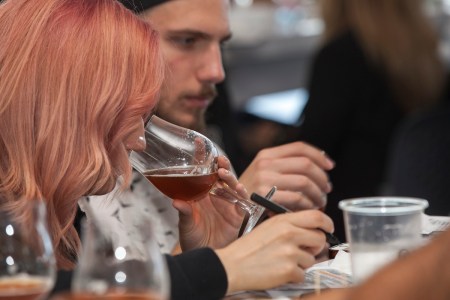
Why is it important to smell beer first?
The evolutionary role of smell is to give us detailed information about what’s around us or about to be swallowed. Will it be spoiled or harmful or be pleasant and refreshing? One problem with the olfactory system is that odours are airborne and volatile, a word derived from the Latin verb volare, meaning “to fly”. These molecular compounds in flight can be tricky to catch which is why there are different smelling techniques at our disposal (see below for more details).
Once you’ve poured beer into a glass, it’s important to start with a few short sniffs before you consider the appearance as aromas are so fleeting. Never underestimate the role your nose plays in beer tasting. Besides smell informing most of what you perceive as flavour, you can build your expectations of quality and enjoyment which enriches the whole tasting experience.
Is the beer fresh? Are the aromas attractive? Are they jumping out of the glass or a bit muted? Remember, the colder the beer, there will be less noticeable aromas to detect.
Smelling techniques
- Distant: swirl while holding glass 15-20cm away from your nose, take 1-2 short sniffs.
- Drive by: swirl, slowly pass glass under your nose, take 1-2 short sniffs.
- Short: swirl, bring glass to your nose, take 1-2 short sniffs.
- Long: swirl, bring glass to your nose taking a long sniff.
- Covered: use hand to cover glass, swirl 3-5 seconds, bring glass to your nose, remove hand and sniff.
Remember, flavour perception continues after sipping and swallowing beer.
Beer tasting is a multi-sensory experience
Try to describe the flavours of that fabulous pale ale you had on the weekend and you’re likely to only recall if you liked it or not. Aromas are especially tricky to find words for, but why is that?
Odours are almost never perceived as isolated compounds, but in a mixture. Beer is a complex product made from four seemingly basic ingredients: water, malt, hops and yeast. Each ingredient contributes its own aromas with lots of background noise, not to mention the possibility of additional ingredients.
To sharpen your sensory skills, become a sensory detective noticing what you smell and taste and how it can change during a tasting. Ask yourself what specific aromas can I smell? How could they get in the glass?
An effective way to train your senses is to organise a blind tasting. Disguise labels and brands of different foods and beers or ask someone to serve you. Our senses are so easily confused. Removing information that can bias your perceptions allows space to focus on aromas and flavours and engage all your senses.
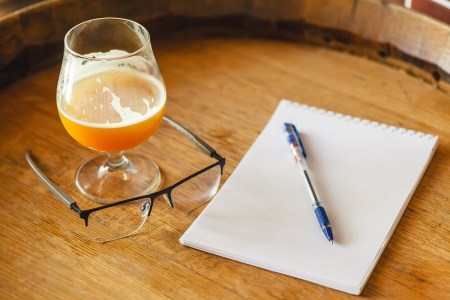
Finding the right words
This is a challenge. The “tip of the nose” phenomenon is real. We often say “I know that smell, but what is it exactly?”. It helps to have a reference in our mental library of smells. Even when we can find descriptors, we all use different words for the same stimuli and find it hard to agree on intensity levels. A malty beer with caramel aromas can be described as toffee, vanilla, burnt sugar, nutty, confection and candy.
There are many resources to improve our knowledge and causes of flavour such as beer flavour wheels which categorise common descriptors into a user-friendly design.
Tuning out to tune in
Our senses quickly adapt to the environment. We tune out overpowering smells when given time to adjust like when stepping into a café with freshly ground coffee. It commonly happens during tasting when you lose the ability to distinguish beer aromas after sniffing a glass continuously or for too long.
Olfactory adaptation is a natural defence to avoid overwhelming our senses. Without it, we might miss other unique or important aromas that might cause us to recoil like smoke. As smell heavily influences taste, your taste buds also adapt when eating and drinking. Your first sip of a beer may be quite bitter, but the effect decreases as you get used to the taste.
The best way to avoid overloading your senses is to rest your nose and palate. Pause regularly and smell something neutral like your sleeve or a glass of water, especially if tasting multiple samples or strongly flavoured beers.
Become a sensory detective
The nose knows the benefits of conscious smelling to greater appreciate what’s in your glass. No one can tell you exactly what you’re smelling so you need to listen to your nose.
You can improve your ability to name aromas and memory recall by smelling a variety of foods and tasting different beer brands and styles. Be guided by your nose and trust your instincts.
Briony’s sensory column appears in every issue of Beer & Brewer. In our coming Winter issue out June 1 she discusses what beer mouthfeel is and how we can describe it to get a complete picture when tasting beer. Subscribe here.
